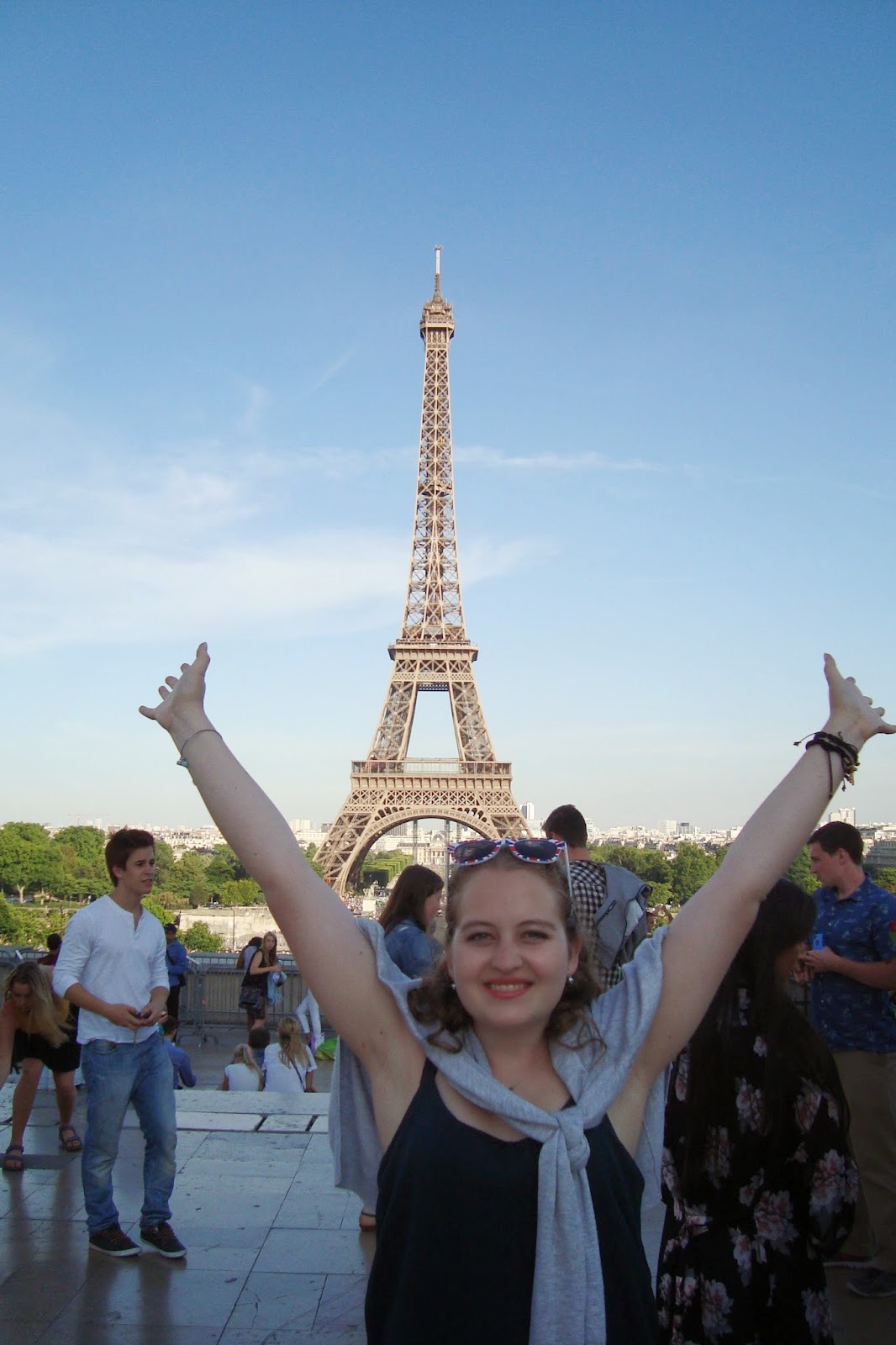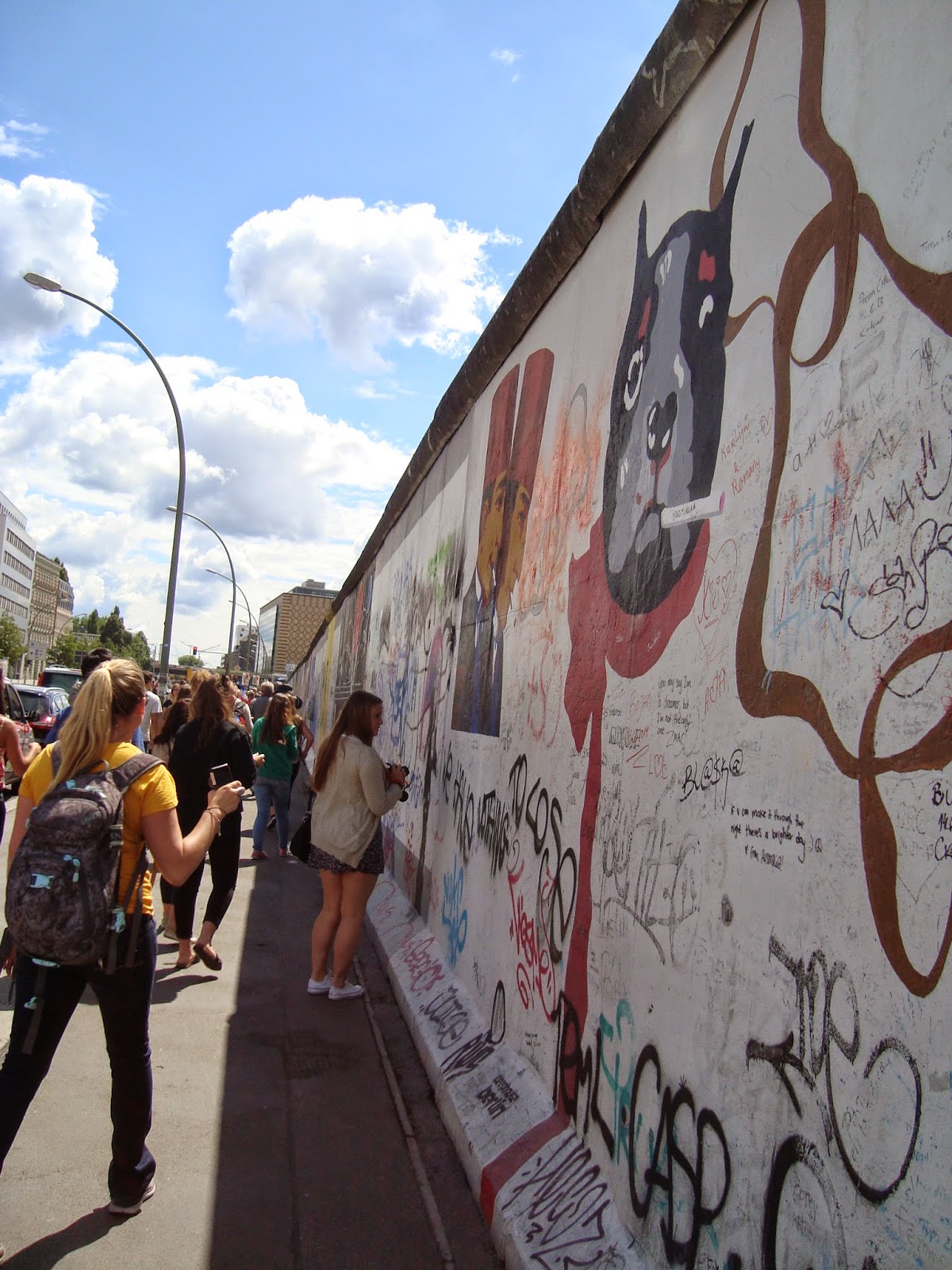Day 5--On the Road--I woke up in Amsterdam, had lunch in Brussels, and went to sleep in Paris. Though I wished we could spend more time in one place, especially in a city as beautiful as Amsterdam, we had to keep moving with nine more countries left to visit and only fourteen days left to do it.
The oddity of traveling to countries where people are more likely to know English than Spanish still took a lot of getting used to. Since us students had spent so much time in a foreign country learning Spanish, when we knew someone's first language wasn't English our brains defaulted to Spanish. Story time: back in the hotel in Berlin, without thinking, I tried to explain to a french-speaking woman how to use the toaster in Spanish. Because of the fact that I was already toasting bread, it wasn't that big of a deal, but as soon as I walked away I realized that the woman most likely knew more English than Spanish. Anyways, we were all getting used to speaking English in foreign countries again.
Our afternoon stop in Brussels, Belgium only lasted a few hours, but we made the most of it. After visiting the sights, we were set loose to scavenge for lunch. Now, I was never pleased with the weight I gained over my months abroad, but in the moment that a soft, warm, golden brown Belgian waffle drizzled with Belgian chocolate crossed my lips I was granted a heavenly moment of acceptance. To come to that moment, crouched on a street corner in Brussels, sharing the most wonderfully fattening thing I had ever experienced with a group of particularly touristy looking teenagers, I felt for the first time in my life that the freshman fifteen that I had gained one year early had suddenly become entirely worth it. A suggestion to anyone going to Belgium, you have not lived until you have had one of their waffles.
Fun fact: Belgium is supposedly the birthplace of the french fry, so the proper name would be Belgian fries.
Shopping center (Above)
We all know this guy, the famous peeing-boy statue. Yes, it is very underwhelming in real life. In fact, I saw souvenir shops that sold bigger versions of the statue above.
Day 6--Paris, France-- The biggest city on the trip so far. Oh, were to begin. Let's get the worst aspects of the city out of the way. It's expensive, polluted, the river reeks of urine and discarded alcohol, and it's infested with tourists and pickpockets alike, the later making me uncomfortably edgy. However, Paris was also bright, atmospheric, green and very beautiful. Mix all of these things together and you get a city with its own wonderful, unique magic that urges me to return.
We started off the day bright and early to take a walking tour around the city. We trekked from Notre Dame to the Champs-Elysees. Conner, our Scottish tour-guide, even pointed out all the pickpockets for us. While we walked around for lunch, Shota decided that he should try and become a pickpocket and succeeded a few times to swipe the sunglasses off of our heads. His biggest mistake was yelling "pickpocket" as he made a grab for our belongings.
After meeting up at the Arc de Triumphe we hopped on the bus and drove to The Louvre Museum. We all went to see the "Mona Lisa" as a group, which involved pushing through several tourist with camera phones taking selfies with one of the most famous paintings in the world. When we got to the front (which is a thick barricade creating a six foot arc around a foot wide painting protected by a frame of bullet-proof glass) everyone asked if I wanted a picture with Mona, but I refused. I didn't take any picture of her that day. I had come this far not even expecting to get the chance to see her in person, so I was just going to look at her. It is surprising just how small the "Mona Lisa" actually is, but even more so is her expression. She isn't exactly smiling, but she isn't unhappy. To me it appeared to be acceptance, as if she could see everything everyone who came across her had ever done and would never judge them for it. For anyone who gets a chance to go to the Louvre don't take a picture with Leonardo de Vinci's most famous work. Simply take a moment to appreciate her, and tell her I said 'hi'.
Anyways, we had about forty-five minutes to explore the rest of the museum after seeing Mona. The two girls I was with and I didn't even make it out of "Egypt" before we had to turn around. Somehow, we all managed to more-or-less get back in time, which is an impressive feat considering how big The Louvre is. If there was one area that I wish we spent more time in, it would be the biggest art museum in the world. If it's impossible to get through the Milwaukee Art Museum in forty-five minutes, imagine how much time is needed to get through The Louvre.
Our final stop before dinner, the Eiffel Tower. Ah, yes, we had all been waiting for this. This is the one thing that is impossible to go to Paris and not see. Excitement was high for the most anticipated activity of the day, even for those with a fear of heights. Unfortunately, when we arrived our tour was delayed because the elevator from the ground to the second level of the tower was broken. Fortunately, now I can check climbing the Eiffel Tower off my list of things to do when I go back to Paris. That's right, a group of thirty-two students and three adults marched up hundreds of metal stairs to reach the top of an iconic landmark. Luckily, the stairs only take you up to the second level of the tower. The third level is the observation deck at the top and can only be reached by elevator. For the entire day I had been a little on edge due to the threat of being pick-pocketed (not by Shota) and had been secretly worried that Paris would not enchant me as it seemed to with each tourist that set foot on its ground. Standing at the top of the Eiffel Tower, overlooking a beautiful sight, I finally felt the enchantment of the city take hold. Though I may not want to live in Paris like I do Amsterdam, the concept that I shall one day return is cemented in my mind.
I can indubitably say that I did fall in love with this city.
Notre Dame
Interesting bit of trivia for those who know the story of 'The Hunchback of Notre Dame' (or at least, the Disney movie adaptation); the book was originally written to help save this now world-famous church from demolition.
There is a law in Paris that all buildings must not exceed six stories. This is the cause for short buildings with curved roofs that allow more sunlight to reach the streets.
The second Love-Lock Bridge (Above)
The real Love-Lock Bridge
De Vinci Code by Dan Brown, anyone?
(Above) Moulin Rouge, for anyone interested
First floor
Second floor
Third floor
More group pictures can be found at: http://rotaryeurotour2014.blogspot.com/2014/06/day-6-paris-france.html


































































































